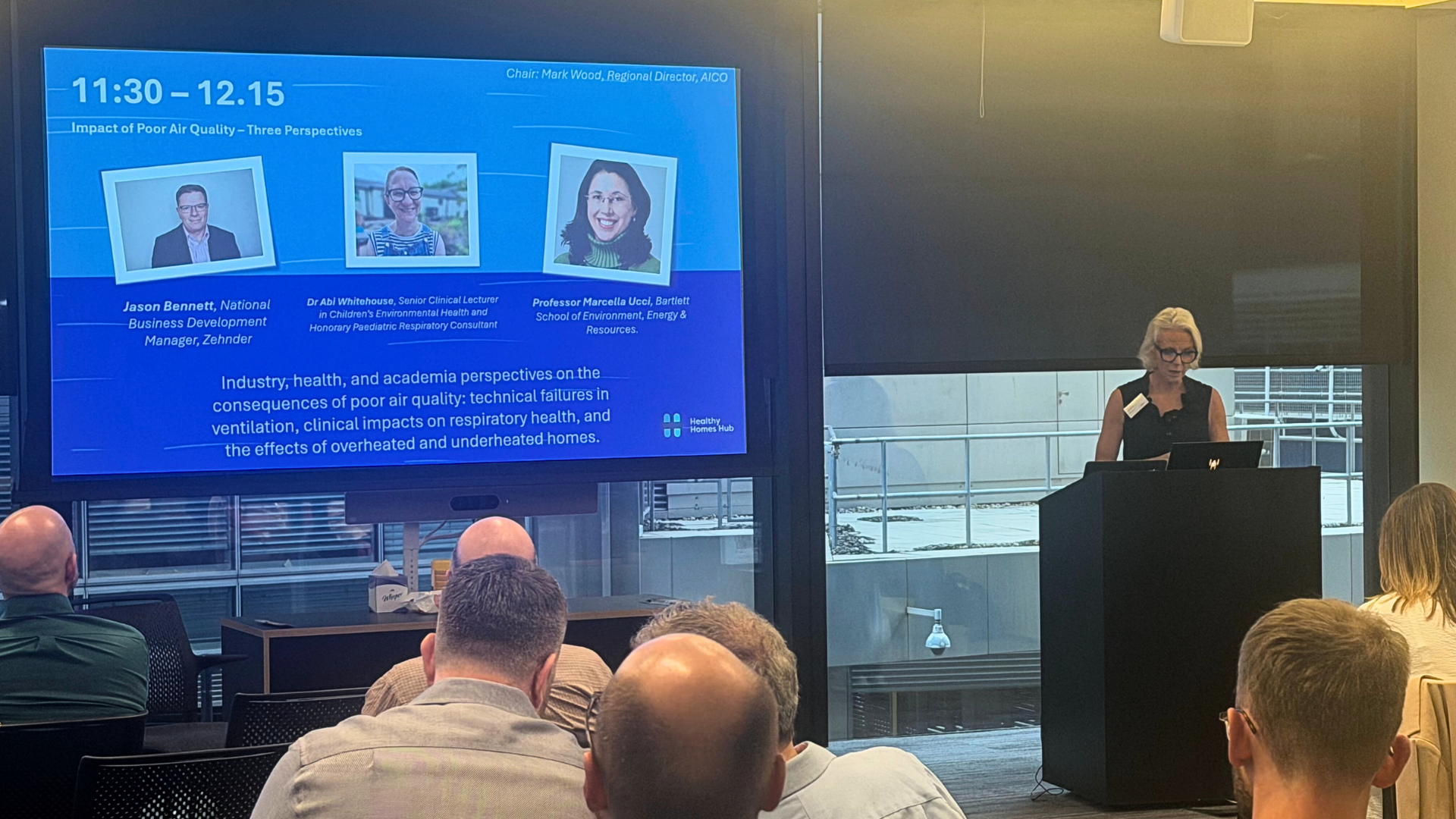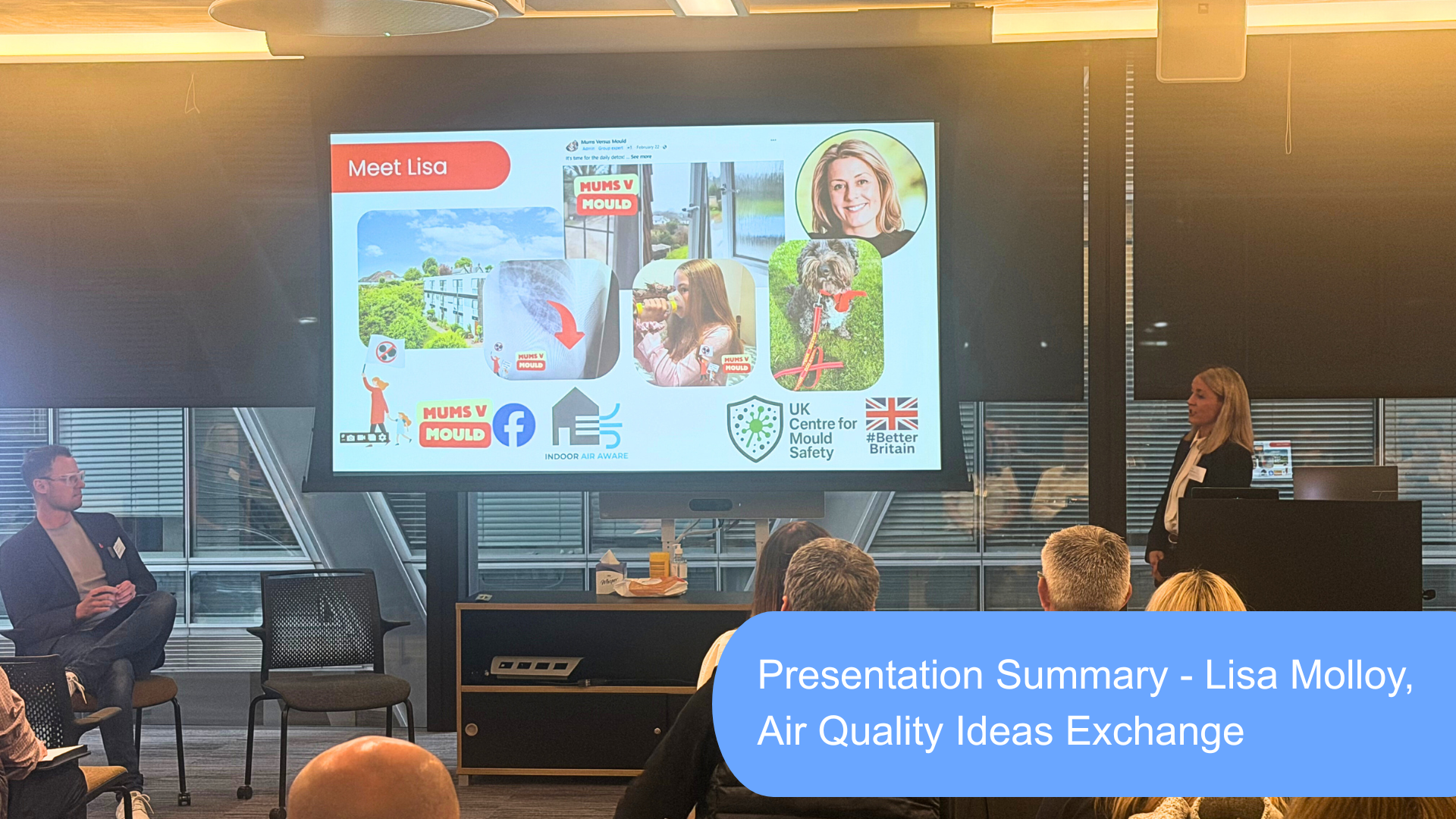Creating a ventilation strategy - Masterclass #1
25th February 2025

Summary of Ventilation Strategies Presentation
Introduction
Jason Bennett and Adam Finley from Zehnder led an insightful session on the importance of ventilation strategies, covering the health impacts of poor air quality and practical solutions for both new build and retrofit housing.
Key Takeaways
Why Ventilation Matters
Poor indoor air quality can lead to serious health issues, including respiratory conditions, cardiovascular diseases, and cognitive decline.
The UK, particularly London, exceeds World Health Organization (WHO) limits for air pollution, contributing to thousands of hospital admissions annually.
Indoor sources of pollution, such as cooking, cleaning, and drying clothes, add to the problem, making ventilation crucial.
Air Quality Challenges and Solutions
Carbon Dioxide (CO2): High indoor CO2 levels indicate inadequate ventilation, leading to fatigue and reduced cognitive function.
Particulate Matter (PM2.5 & PM10): These pollutants penetrate deep into the lungs and bloodstream, exacerbating health conditions.
Humidity Control: Maintaining relative humidity between 40-60% prevents mold growth and structural damage to homes.
Overheating: Poor ventilation contributes to excessive indoor heat, particularly in airtight homes.
Ventilation Strategies
Types of Ventilation Systems:
Natural ventilation (windows, vents, and passive airflow)
Continuous extract ventilation (removing stale air through a centralised or decentralised system)
Mechanical ventilation with heat recovery (MVHR), which recycles heat from outgoing air to improve energy efficiency
Regulatory Considerations:
Compliance with Part F of Building Regulations is essential, though often overlooked in retrofit projects.
Overcrowding in social housing should be factored into ventilation specifications.
Tips for Creating an Effective Ventilation Strategy
Assess Building Needs – Consider the layout, occupancy levels, and existing ventilation systems before implementing changes.
Choose the Right System – Balance cost, efficiency, and practicality; MVHR works well for airtight homes, while PIV can be a solution for existing stock.
Consider Overcrowding – Ensure ventilation systems account for actual usage rather than ideal occupancy levels.
Prioritise Humidity Control – Maintaining the right humidity balance prevents mold growth and enhances comfort.
Integrate with Other Measures – Ventilation should complement insulation and heating systems for maximum efficiency.
Ensure Maintenance & Access – Regular servicing and easy access to filters and ducts help sustain system performance.
Educate Residents – Encourage proper usage and maintenance to maximise the benefits of ventilation.
Retrofit Considerations
Ventilation is often an afterthought in retrofit projects, but improving air quality should be prioritised alongside insulation and energy efficiency measures.
Positive input ventilation (PIV) systems can help but should be part of a wider strategy rather than an isolated fix.
Over-specification may be needed to account for overcrowding and changing household compositions.
Resident Engagement & Behaviour Change
Indoor air quality (IAQ) monitors can provide valuable feedback, helping residents understand and adjust their behaviours.
Providing clear guidance on ventilation system use and maintenance is essential to ensure effectiveness.
Nudging behaviour, such as demonstrating the effects of air fresheners and cooking on IAQ, can drive resident engagement.
Compliance & Industry Challenges
Building Control & Regulation: Many landlords and asset managers do not formally notify building control when replacing ventilation systems, despite requirements.
Funding Challenges: Ensuring proper ventilation across large housing portfolios requires significant investment.
Collaboration Needed: Manufacturers, landlords, and policymakers must work together to standardise best practices.
Become a member, to see this event
Social Housing Providers, Local Government, and Academics can sign up for free to access this event and more.
Already registered? Login Here
Related Content
What Are the Benefits of Being a Member of the Healthy Homes Hub?
Industry Recognition and Networking:
Connect with a thriving network of over 350 housing organisations, including decision-makers, innovators, and leaders. Build partnerships that enhance your professional growth and create lasting business opportunities.
Showcase Your Expertise:
Demonstrate your impact by participating in exclusive case studies, webinars, and events. Highlight your contributions to creating healthier, sustainable homes, reaching a broad audience across the sector.
Influence Policy and Advocacy:
Be part of shaping housing policy through direct engagement with policymakers and advocacy efforts. Stay at the forefront of discussions driving meaningful change in the housing sector.
Access to Market Insights:
Gain access to Healthy Homes Hub’s regular newsletters, expert analysis, and resources. Stay informed about trends, regulations, and innovative practices that affect housing professionals.
Specialised Events and Workshops:
Take part in events like the Immersive Study Tours, offering hands-on learning and networking opportunities. Visit groundbreaking projects and facilities to explore real-world solutions for healthier and more sustainable homes.
Exclusive Tools and Resources:
Only members can upgrade to Housing Sage, a cutting-edge AI assistant tailored to social housing professionals. Benefit from personalised insights, regulatory guidance, and innovative ideas to enhance your operations.
Collaboration Opportunities:
Contribute to Healthy Homes Hub’s mission by sharing best practices, participating in action learning programmes like the Retrofit Society, or co-developing solutions with academic and industry leaders.



